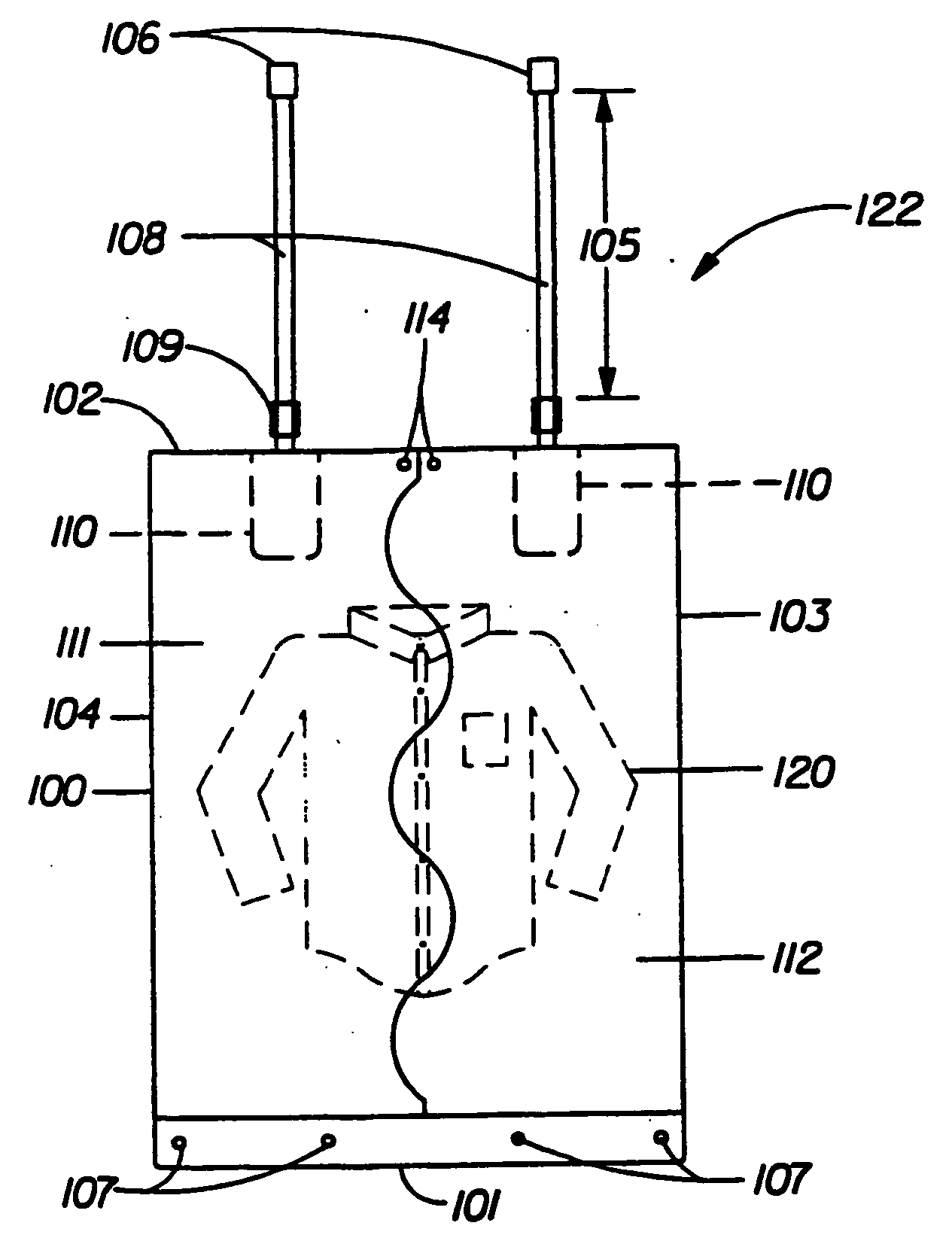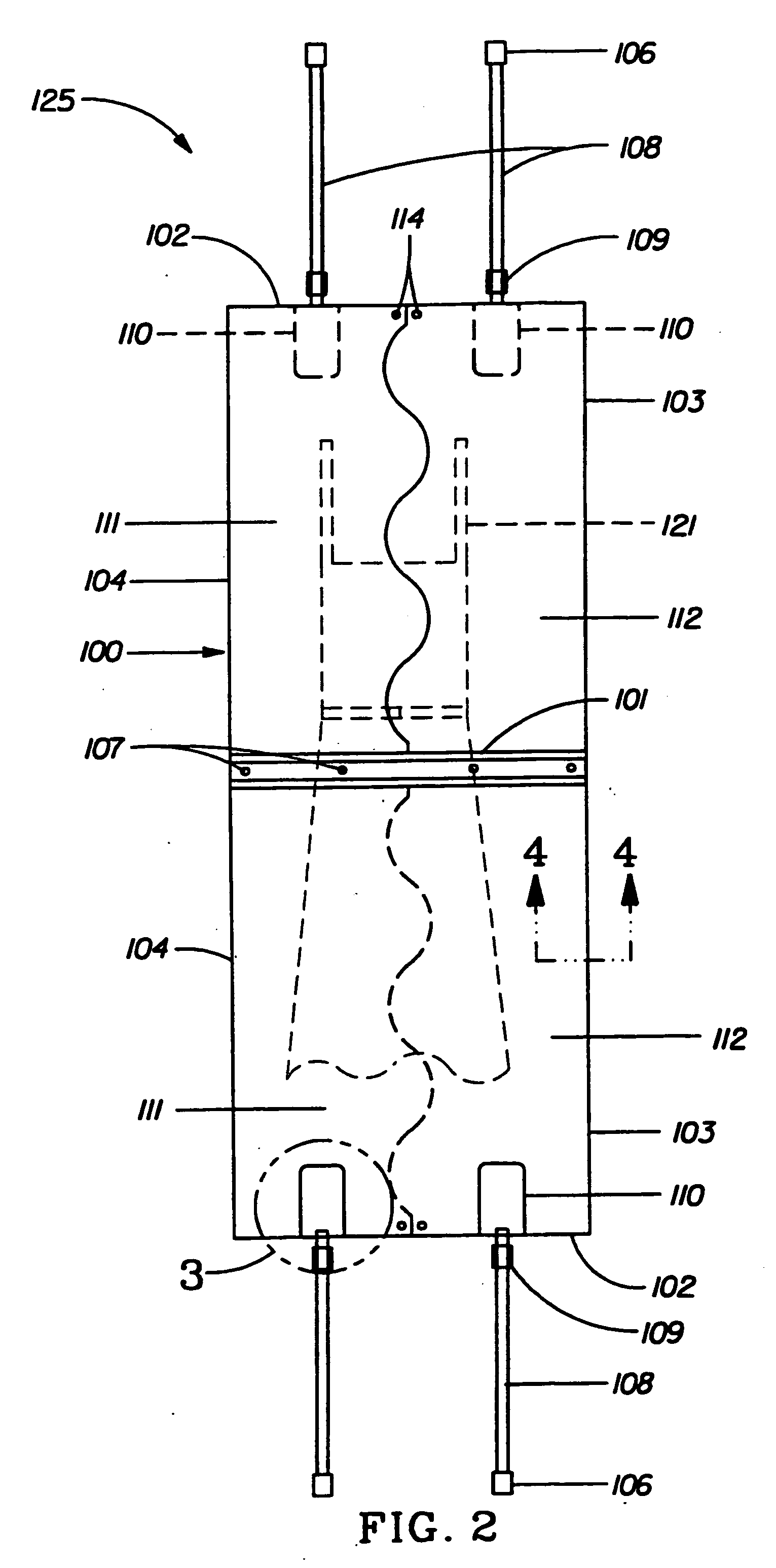Methods for laundering delicate garments in a washing machine
a washing machine and delicate technology, applied in the direction of dry cleaning apparatus, other washing machines, textiles and paper, etc., can solve the problems of inconvenient and expensive, inconvenient cleaning process, and exposure of delicate and often expensive garments to dry cleaning processes of inconsistent quality and garment care, and achieve the effect of convenient cleaning process and less cos
- Summary
- Abstract
- Description
- Claims
- Application Information
AI Technical Summary
Benefits of technology
Problems solved by technology
Method used
Image
Examples
process embodiments
[0235] The use of the devices, compositions and processes of this invention are described in more detail hereinafter. Such disclosure is by way of illustration and not limitation of the invention herein.
[0236] Although not necessary or essential to the present invention, it is preferable to use a pretreatment procedure to improve the effectiveness of removing stains from a stained area of the garment. This pretreatment procedure comprises pouring a pretreatment composition to the stained area and then distributing and spreading the pretreatment composition over the stained area with the wash pretreatment applicator by applying a gentle brushing motion to distribute the pretreatment composition around the stained area of the garment. The pretreatment composition and loosened soil is then optionally rinsed off the treated area with water.
[0237] In more detail, the pretreatment process herein can be conducted in the following manner. Modifications of the process can be practiced with...
example i
[0253] The following provides non-limiting examples of a (1) preferred wash pretreatment composition to be used in the pretreatment process; and (2) a washing / conditioning composition to be added during the wash cycle. It should be understood that all of the amounts are approximate (or “about”) the amounts listed. It should also be understood that the components are mixed together to form the compositions. The compositions are used in a manner described after the detailed formulations.
Wash Pretreatment CompositionComponentWeight %Nonionic Surfactant 1-10%Anionic Surfactant10-30%Amine Cosurfactant0-3%Citric Acid1-4%Ethanol1-3%Monoethanol amine0.5-7% Trimethyl pentanediol0.5-5% (TMPD)Propanediol 1-10%Tolulene Sulfonate1-5%NaOHto adjust pHFabric Care Agents1-5%Enzymes0.1-2% Water and perfumeBalance
[0254]
Washing / Conditioning CompositionComponentWeight %Anionic Surfactant110-25%Nonionic Surfactant21-6%Lauryl trimethyl ammonium 1.5-12.5%chlorideTrimethyl pentane diol0.5-5% (TMPD)Cit...
process example
[0255] Step 1. One or more garments to be cleaned and refreshed are selected. Stains on a garment from sources such as ink, lipstick, salad dressing, collar soil and other similar sources are then identified and selected for pretreatment. For pretreatment, localized stained areas of the garment are situated over a paper towel and are treated by directly applying about 0.5 to 5 mls (depending on the size of the stain) of the wash pretreatment product of Example I, which is gently worked into the garment using the wash pretreatment applicator. Excess liquid product is then washed off the stain with running cold tap water.
[0256] Step 2. The flexible wrap container is laid flat on an even surface such as a table or clothes dryer. A first garment such as a jacket is placed on the wrap. The sleeves and other extensions of the garment should be folded-in if necessary and none of the garment may lie outside the perimeter of the wrap. After the first garment has been laid on the wrap, the w...
PUM
 Login to View More
Login to View More Abstract
Description
Claims
Application Information
 Login to View More
Login to View More - R&D
- Intellectual Property
- Life Sciences
- Materials
- Tech Scout
- Unparalleled Data Quality
- Higher Quality Content
- 60% Fewer Hallucinations
Browse by: Latest US Patents, China's latest patents, Technical Efficacy Thesaurus, Application Domain, Technology Topic, Popular Technical Reports.
© 2025 PatSnap. All rights reserved.Legal|Privacy policy|Modern Slavery Act Transparency Statement|Sitemap|About US| Contact US: help@patsnap.com



